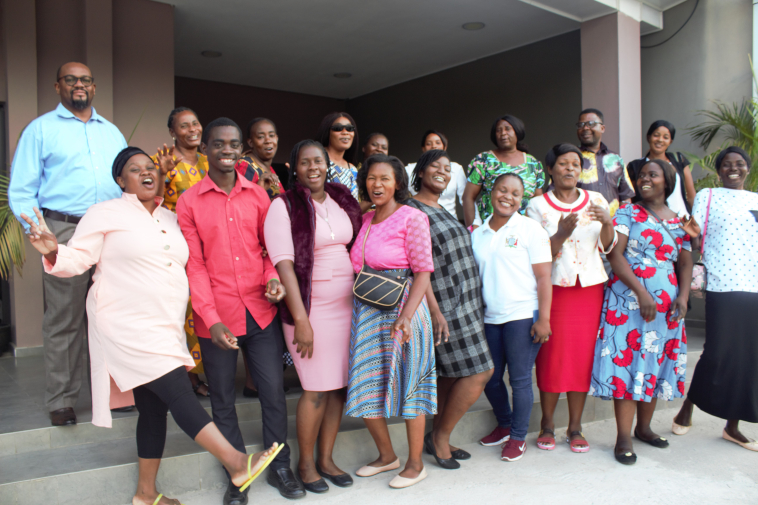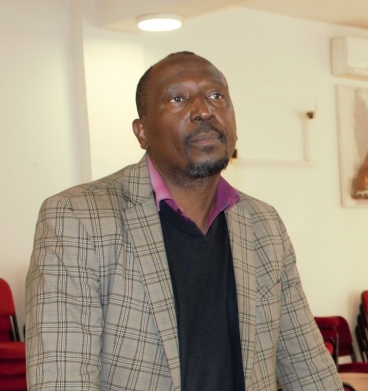Removing barriers to access of safe abortion through self-management in Zambia

Recent international recommendations provided by the WHO (updated 2022 WHO Abortion Care Guidelines), state that in early pregnancy, medical abortion can be self-managed.

Enabling the option for self-managed abortion (SMA) can significantly improve access to safe, timely, affordable and person-centred abortion care. FIGO have been exploring different ways to support member societies to advocate for and operationalize SMA in their countries, as part of their work towards improving access to safe abortion services.
As part of this drive, FIGO has partnered with the Zambia Association of Gynaecologists and Obstetricians (ZAGO) to carry out a project aimed at mainstreaming self-managed abortion as an option for women and girls in Zambia.
With a legal framework which supports self-managed abortion in the country (under the legal grounds permitted), and updated national abortion guidelines which ZAGO helped to develop to support this, the Self-Managed Abortion Advocacy (SMAA) project builds on expertise from existing FIGO safe abortion projects and the Leadership Development Initiative. ZAGO are working with 31 health facilities and associated community health workers across 3 provinces to identify barriers in the health system and community to implementation of SMA, and to examine knowledge, attitudes and practices of providers. With this comprehensive information collected and collated, ZAGO will carry out activities to try to improve access and uptake of SMA.
Six months into a one year project, we caught up with ZAGO President, Dr Swebby Macha, to find out more about the project and what he hopes it will achieve.
Why is the SMAA project important for safe abortion access in Zambia?
With self-managed medical abortion, there is no need to return to health facility after initial assessment, as the woman or girl is allowed to take medications at home, and able to self-assess the success of the abortion. In view of this, several barriers to access to services in Zambia are completely removed, such as long distances to health facilities to access abortion care services, inadequate number of health facilities providing abortion care, stigma surrounding abortion, and long waiting period to access abortion services. Self-managed medical abortion therefore addresses the barrier of frequent visits to the health facility by the woman – since she is only required at the health facility for the initial assessment and prescription. The SMAA project is identifying the barriers to implementation of self-managed abortion, and working to remove or reduce them, thus leading to improved access, financial and social benefits to patients, and reducing stigma around abortion care.
Now we are halfway through the project, what has been achieved so far?
After initial buy-in meetings with the 3 Provincial Health Teams and the stakeholders in the national Safe Abortion Advocacy Group, including the Ministry of Health, together with FIGO we developed a comprehensive Barriers Assessment Tool and Knowledge, Attitude and Practices survey to identify problems with implementation of self-managed abortion in the chosen facilities and at national level. Following training, data was collected from the 31 facilities, and a thorough data analysis was conducted, the outcomes of which have provided the basis for our activity plan and project implementation.
In line with these findings, we have developed a training package and reference manual for self-managed medical abortion, along with SMA Protocols and Job Aids, all for roll out with staff at the project facilities. Training has been given to 30 providers and supervisors, which aimed to increase knowledge and provision of services. As a result of this, facilities will also provide monthly reports on 5 key indicators in order to track the uptake of self-managed medical abortion in the target health facilities.
Outside of the health facility, while the baseline surveys showed a lack of knowledge about self-managed abortion in the community, we have conducted various awareness raising activities to try to address this. This includes 6 radio sensitization programs on 3 provincial radio stations presented by healthcare providers, youth advocates, traditional marriage counsellors, and Midwives Association of Zambia. Sensitisation workshops have been held with 18 Youth sexual and reproductive health and rights (SRHR) Advocates from 9 of the 10 target districts, who have gone on to conduct community sensitizations themselves. Workshops have also been held for 16 Community Health Volunteers from all the 10 target districts. Furthermore, commemoration of International Safe Abortion Day in the community included over 800 people.
Building on your findings, what else are ZAGO planning to do to advance access to SMA for women and girls in Zambia?
As we move into the second half of the project, we have many activities planned to address problems highlighted in the baseline surveys. To address issues within the health facility, we will be providing onsite mentorship on SMA to the abortion providers and sharing job aids with all facilities. We plan to help ensure supply of drugs to facilities by working with pharmacy personnel and District Directors of Health on drug quantification and forecasting. Finally, we will conduct webinars with various stakeholders including healthcare providers to continue educating on SMA.
In the community, we will continue to conduct community sensitizations and outreach meetings; sensitisation workshops with youth groups; and workshops with community health volunteers to raise awareness on SMA, and will extend our use of various platforms such as radio, TV, and social media to reach out various stakeholders about the importance of SMA.
Throughout the project we will be receiving data on 5 key indicators on uptake of self-managed abortion, and at the end of the project we will carry out the BAT and KAP surveys again to assess what change has happened over the course of the year.
With the experience gained from this project, FIGO will share recommendations and tools, and look for further partnerships, in order to support other member societies and stakeholders to further disseminate the 2022 WHO guidelines and improve access to safe abortion services for women and girls.
FIGO thanks Children’s Investment Fund Foundation and Clinton Health Access Initiative for their funding of the project.